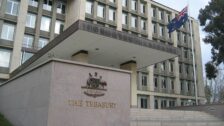Super tax break costs misrepresented: Mercer
Public debate about the cost of superannuation tax concessions – and government plans to overhaul the system – arises from a misrepresentation of the actual costs and savings to the government, according to a new Mercer report that finds concessions cost less than they save in future Age Pension costs.
While recent criticism of the super system has centred on claims Australia’s tax concessions for retirement savings are too generous, particularly for high-income earners, Mercer argued in its report, Rethinking super tax concessions, that the costs used to model these arguments don’t actually represent the revenue gain that would occur without concessions or the long-term Age Pension savings they bring to the government.
“Super tax concessions can be seen as an investment by the government to reduce future Age Pension costs,” wrote Mercer senior partner David Knox, the report’s author. “If superannuation works, then we should expect lower Age Pension expenditure in the future.”
However, he said, the published figures underlying this debate “do not encourage a sensible and holistic public discussion about the appropriate level of superannuation tax concessions”.
Inappropriate analysis
The report follows claims by Treasurer Jim Chalmers that superannuation tax breaks cost Australian taxpayers $50 billion a year, with the majority of those concessions benefitting high income earners. To address this inequality, the Labor government has proposed to double the tax on investment earnings for superannuation balances exceeding $3 million.
According to Knox, the “general direction of these reports and other commentary suggests that the current tax arrangements for superannuation are unfair and/or unsustainable.” He therefore sought to look at the problem from a different perspective: whether the government’s investment in superannuation provides a fair outcome for individuals and improves the government’s future fiscal position.
Comparing today’s Age Pension costs with the level of superannuation tax concessions for future retirees is inappropriate, Knox noted.
“These two forms of government support are given to different generations for different purposes,” he said. “There is no reason why one should be higher or lower than the other.”
‘Reasonable level of support’
Taking a longer-term view by analysing more representative data, Mercer found that for median and average income earners, the cost of the concessions is less than the future Age Pension savings arising from superannuation.
And while the cost to the government for high-income earners is higher, the report noted that these individuals are likely to have financial assets that reduce their need for Age Pension payments and that high-income earners often receive financial advice to maximise their income and reduce their income tax.
Ultimately, the report found government support for superannuation amounts to less than 10 per cent of the value of the contributions and investment income preserved for retirement.
“This result represents a very reasonable level of support and cannot be considered excessive,” Knox said, adding that there are good policy reasons for people to be compensated in a compulsory superannuation system.
“This approach doesn’t mean that the current concessions couldn’t be improved to make the system fairer and to ensure that everybody receives value from the concessions,” the report stated.
It recommended reducing the taper rate of the Age Pension assets test to $2 per fortnight from $3 per fortnight, increasing current minimum drawdown rates for pension products by 2 percentage points, and halving the current non-concessional contribution cap or introducing a lifetime cap.
The report also approved of doubling the tax rate on superannuation balances above $3 million “while ensuring that this cap is always greater than or equal to the indexed transfer balance cap”.
“These changes will reduce the level of the super tax concessions received by those with significant superannuation balances whilst at the same time retaining some concessions,” Knox said.
This article originally appeared on The Inside Investor.











